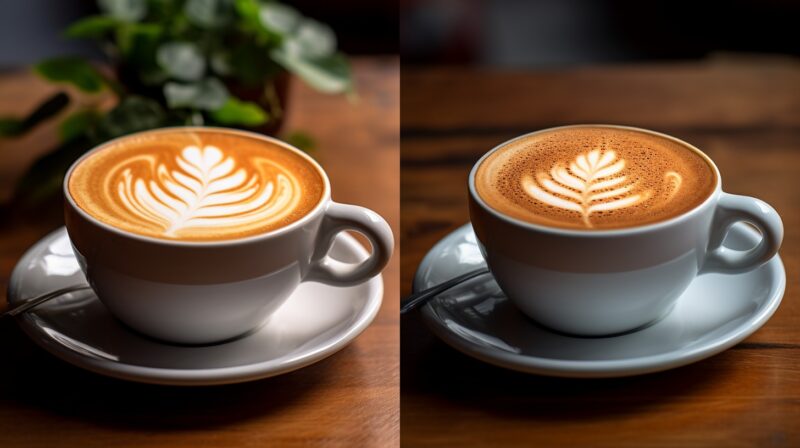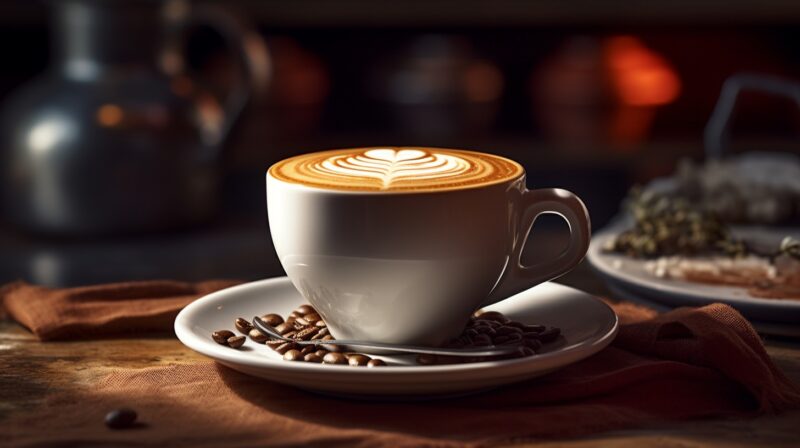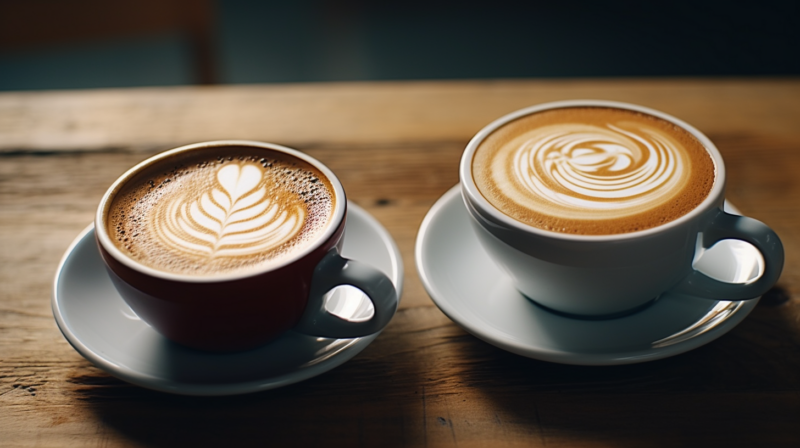Hey, hey! We have a ‘new’ kid on the block. A flat white coffee. What is it, and how does it compare to the timeless latte?
What’s it’s storyFor newcomers to the world of specialty coffee, you might have heard of a new kid on the block. A “flat white” coffee. Maybe you even saw it from your local Starbucks menu.
There’s a wee bit of confusion as to what a flat white is – after all, if it’s an espresso-based coffee with milk, how is it different from a latte? And why should I bother trying it?
One of, if not the most popular coffee in Australia and New Zealand, a flat white can often be confusing when compared with it’s big brother the latte. What exactly is it?
“A flat white is a double espresso, topped with steamed milk.”
Double Espresso
A double shot of espresso is what you get when you double everything in the recipe of a regular espresso shot. From 16-20g of coffee grounds, it is brewed for around 30 seconds and produces around 60ml (2 oz) of concentrated espresso.
Steamed Milk
A flat white’s milk has a silky, velvety smooth texture. This is the polar opposite of a cappuccino, which has thick, heavily frothed milk.
As a result, you can sip the creamy milk and taste the liquid milk itself a lot more, as opposed to a mouthful of froth.
Cup Size
Flat whites are most commonly served in 6 oz cups. This makes it a stronger coffee, as the milk to coffee ratio is higher.
The Difference: Flat White vs Latte

Coffee Strength
One of the easiest ways to distinguish these two coffees is to think of it like this:
A latte is a milder, milkier coffee.
A flat white is a stronger milky coffee.
This comes down to the size of the cup used. As mentioned above, flat whites are usually served in 6 oz (180 ml) ceramic cups. Lattes are most commonly served in 8 oz (240 ml) cups or glasses.
Since both a latte and a flat white are made with double espressos, the only difference is the volume of milk used to top up the cup. As expected, a flat white will have less milk due to the smaller cup size. Hence, it is less diluted, and you can taste the espresso itself quite a bit more.
Specific recipes vary from cafe to cafe. Some cafes serve lattes only with a single shot of espresso. Flat whites are almost always double shots (with some cafes serving a double ristretto instead of full espresso shots).
So if you’re feeling particularly groggy one bleak morning, and need a slightly stronger coffeev kick, pick a flat white over a latte.
Foam Level
The milk foam plays the most important role distinguishing these two drinks. Remember how I said cappuccinos have really thick, heavily frothed milk? And lattes have a smoother, more creamy milk foam?
A flat white has an even thinner layer of milk foam than a latte.
When a barista is steaming milk for a flat white, he or she will stretch it less. Meaning less air is injected and mixed into the milk. Hence, the foam level is very thin, about 0.5cm from the brim. A latte has about 1cm of foam.
If you’re the type of coffee drinker that doesn’t like to get a white mustache of foam all over your lips, a flat white will be right up your alley.
The Story of the Flat White

And here we have another great Australia versus New Zealand smack down. These two are neck in neck when it comes to specialty coffee. But both countries claim they invented it first! So where did the flat white truly originate from?
Wellington, New Zealand
A former barista from Wellington claims he invented the flat white thanks to a mistake, way back in 1989. Whilst trying to froth milk for a cappuccino, he stretched it too little. What was poured into the cup turned out to be a thin, flat milk coffee.
“I went over to the [customer] and said ‘sorry, it’s a flat white’.”
From then on it was listed on the cafe menu! You can read that fun story here: Kiwi Claims Flat White Invention.
Sydney, Australia
An Australian barista who opened his own cafe in Sydney, said he created the drink after drawing inspiration from his previous patrons. They would order a “white coffee, flat” – just milk and coffee, with no froth.
This was back in the 1980s, so Australia could have technically been the ones to invent it first. Either way, both men boldly went forth and gave the world a drink beloved by coffee aficionados today!
So, how did the flat white spread across the oceans?
Globally
Then, as specialty coffee slowly started spreading far and wide across the Pacific to America, Starbucks tried jumping on the bandwagon. They introduced it as a “hip” alternative to a latte.
Aaaand this didn’t turn out too well. Starbucks’ enormous “tall”, “grande” and “venti” cup sizes meant they couldn’t really give any true distinction between this new drink and their lattes. The taste of coffee was drowned out by the sheer volume of milk. Attention was not paid to the foam level. Customers did not appreciate it very much.
But, every cloud has a silver lining, and this essentially opened the doors for proper flat whites to enter the rest of the Western world. Specialty coffee cafes across America and Europe now have flat whites as staples on their menus. Well-trained baristas pour hundreds of flat whites with impressive art on them daily.
With the rise of third wave specialty coffee, flat whites are a great milk coffee that allows the delicate taste of espresso to come forth, allowing the hard work of coffee farmers, roasters and baristas to shine through.
All’s well that ends well!
Frequently Asked Questions
Can I make a Flat White with a single espresso shot instead of a double?
Yes, you can use a single shot for a milder version, but traditionally, a Flat White is made with a double shot for a stronger coffee flavor.
Is the Flat White suitable for lactose-intolerant individuals?
Yes, you can use lactose-free milk or plant-based alternatives like almond, soy, or oat milk to make a lactose-free Flat White.
How does the caffeine content in a Flat White compare to a Latte?
Since both drinks typically use a double shot of espresso, their caffeine content is similar, though this can vary based on the coffee beans used.
Can I add flavors or sweeteners to a Flat White?
Yes, you can customize your Flat White with flavors or sweeteners, but traditionally it’s enjoyed without to appreciate the coffee’s natural taste.
Is a Flat White always served in a ceramic cup?
While traditionally served in a 6 oz ceramic cup, you can serve a Flat White in any cup, but the size and material may affect the heat retention and taste.
What’s the best time of day to enjoy a Flat White?
A Flat White can be enjoyed any time, but it’s particularly popular as a morning or mid-afternoon coffee due to its strong and rich flavor.
How does the texture of milk in a Flat White differ from other espresso drinks?
The milk in a Flat White is steamed to a silky, velvety texture with minimal foam, differentiating it from the thicker foam of a cappuccino or the creamier foam of a latte.
In a Nutshell
If you’ve been worried about fussing your local barista for a flat white, instead of the more common latte, don’t be! It’s essentially the same thing: both are espresso-based drinks with steamed milk.
The only difference is that a flat white is a smaller, stronger coffee with less foam.
If:
- You want a coffee that is stronger;
- You want to be able to taste the flavour of the coffee beans and espresso more;
- You want a slightly smaller coffee to sip on,
Then give a flat white a go! Easy as!
